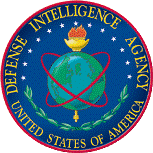United States Department of Defense
Date of this Version
1977
Document Type
Article
Abstract
This document is a basic organizational history of the Foreign Science and Technology Center (FSTC). It describes how FSTC was built out of various Army technical intelligence organizations; traces its relocations eventually culminating in settling into a federal building in Charlottesville, VA; and traces its various reorganizations and changes in staffing.
Appendix A contains a detailed discussion of FSTC Table of Distribution and Allowances (TDAs) changes over the years. That analysis shows how administrative problems were handled and how the focus of the organization had changed over the years. It also contains organizational charts corresponding to new TDAs, and tables showing the strengths in officers, enlisted soldiers, and civilian employees at various times.
Appendix B discusses the relationships of FSTC with other organizations particularly other military intelligence organizations. In 1977, the Foreign Technology Division (FTD) of the Air Force Systems Command and the US Naval Intelligence Support Service (NISC) of the US Naval Intelligence Command were analogous organizations in the Air Force and Navy. The Missile Intelligence Agency (MIA) also reporting to DARCOM and the Medical Intelligence and Information Agency (MIIA) reporting to the Office of The Surgeon General of the Army were other Army technical intelligence agencies.
Appendix C discusses tasking procedures for FSTC. It also contains a table showing how many of the various kinds of studies, briefings, etc. were produced each fiscal year.
Appendix D is DARCOM Regulation 10-5, Organization and Functions, US Army Foreign Science and Technology Center.
Appendix E is a list of the official orders and regulations related to FSTC.
Appendix F is a photograph of the FSTC building in Charlottesville, VA.
Included in
Defense and Security Studies Commons, Military and Veterans Studies Commons, Other Engineering Commons, Peace and Conflict Studies Commons, Soviet and Post-Soviet Studies Commons



Comments
(1) This document was previously available at this location. However, that version was heavily redacted – all appendices and references to the appendices had been removed.
(2) This copy was released by the US Army Intelligence and Security Command in response to a Freedom of Information Act on 14 July 2006.
(3) A Table of Distribution and Allowance (TDA) is an Army administrative document prescribing the organizational structure, personnel, and equipment authorizations, and requirements of a unique military organizations such as a special purpose intelligence organization.
(4) For a while the Army Materiel Command (AMC) was known as Department of Army Materiel Development & Readiness Command (DARCOM). This was, apparently, a case of changing our name to serve you better. Eventually good sense prevailed and the name reverted to the Army Materiel Command (AMC).
The terms field operating agency and staff support agency replace the former designation Class II activity. A field operating agency is concerned primarily with operational functions, although it may operate under the supervision of a specific staff agency. A staff support agency, on the other hand, directly supports the Army staff, usually with management information, analysis, or command and control support. (a note on Page 48 of Department of the Army Historical Summary, Fiscal Year 1973 < http://www.history.army.mil/books/DAHSUM/1973/ >.) The Army technical intelligence agencies were Class II activities reporting to the chiefs of the Army technical services, and FSTC, their successor, was characterized “separate field activity”… under DARCPM in 1977.